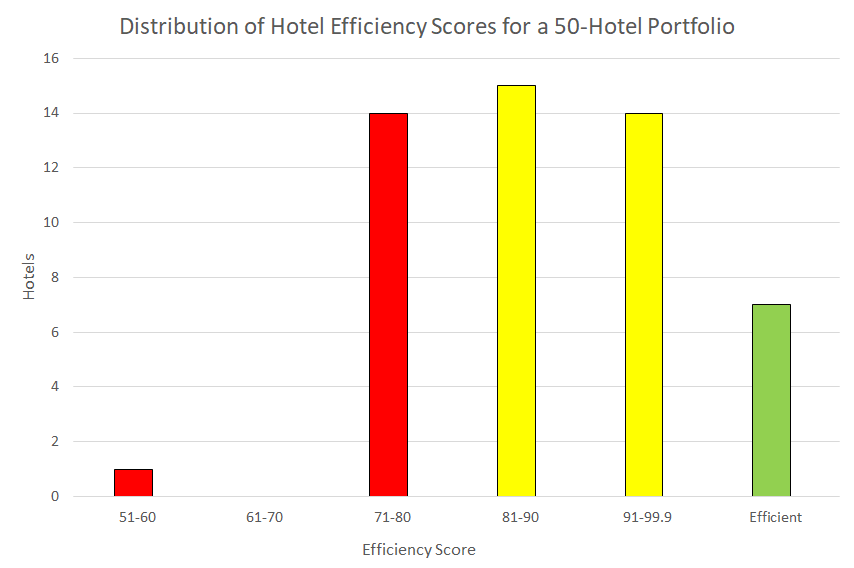In an earlier post this year, we introduced our readers to Data Envelopment Analysis, (DEA & Productivity – Brief 2018), a linear programming methodology used to measure the relative performance and efficiency of Decision Making Units (DMUs), in our case hotels, when the production process presents a difficult structure of multiple inputs and outputs. In our earlier post we said that many argue that profitability is the only performance measure of relevance in the hospitality industry.
The main argument against this is that environmental factors can affect the attainment of profitability. A profitable hotel may be being managed efficiently or it may be just enjoying favorable external conditions, whilst an unprofitable one may be being badly managed or simply experiencing unfavorable pressures from the environment. In making decisions about hotels, we believe that both efficiency and profitability are relevant performance measures and that DEA could be used to determine efficiency and to separately determine profitability.
Our earlier post listed the major benefits of using DEA, which included identifying star hotels with best practice, uncovering the greatest potential efficiency gains and setting realistic, peer based targets for improvement. In the infographic that follows we outline the approach we take evaluating the efficiency of hotels within a multi-hotel, multi-market portfolio. A four-phase process is normally deployed as follows:
- Phase 1: Issues Identification
- Phase 2: Input/Output Measures
- Phase 3: Model Development, and
- Phase 4: Managerial Implications.
The approach we take ensures that a comprehensive configuration of input factors are incorporated into out DEA model. It also ensures that the results are meaningful to the hotel by capturing the importance of top management’s strategic perspectives at the hotel level analysis. Though strategy is typically formulated at the corporate level, execution of a strategy occurs at the hotel level. Evaluation of hotel efficiency, therefore, should incorporate top management’s strategic assessments of those factors that can be controlled at the corporate office and/or by hotel personnel. 
